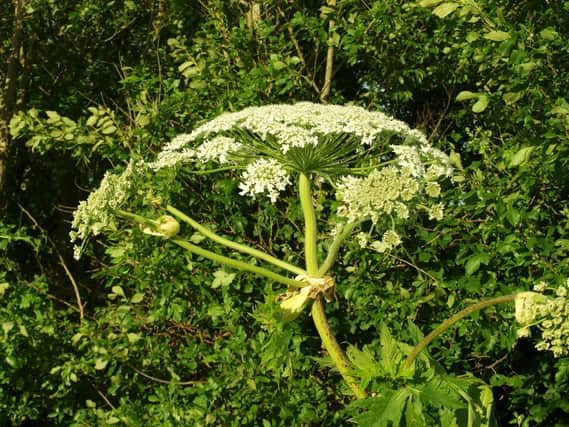Giant Hogweed warning issued in Halifax by trade body


Over the years a number of children, as well as adults, have reported injuries after coming into contact with the invasive weed in the UK.
Now, as the summer holidays take hold, the Property Care Association (PCA) is urging vigilance to help protect against injury.
Advertisement
Hide AdAdvertisement
Hide AdDr Peter Fitzsimons, technical manager of the PCA’s Invasive Weed Control Group, said: “Giant Hogweed’s sap is extremely toxic to the skin in sunlight, making it a danger to public health.
“Youngsters are more likely to come into contact with the plant during the summertime and the mix of warm weather and rain has provided good conditions for the weed to take hold this year.
“Giant Hogweed is also spreading across a wider area, meaning that people are more likely to encounter it.
“If anyone comes into contact with any part of the plant, followed by exposure to sunlight, they can sustain severe blistering to the skin and discomfort, and this reaction can recur for many years.”
Advertisement
Hide AdAdvertisement
Hide AdGiant Hogweed can produce up to 30,000 to 50,000 seeds, which can survive in the soil for a number of years.
The invasive weed is capable of growing to a height of up to five metres.
Dr Fitzsimons added: “The general public, as well as local authorities, statutory agencies and landowners on whose property people can come into contact with the plant, should be aware of the risks and Giant Hogweed needs to be controlled and managed professionally.”
"The PCA also provides a means of identifying specialist contractors and consultants with the expertise to control and manage invasive species such as Giant Hogweed, as well as other plants such as Japanese knotweed.”
